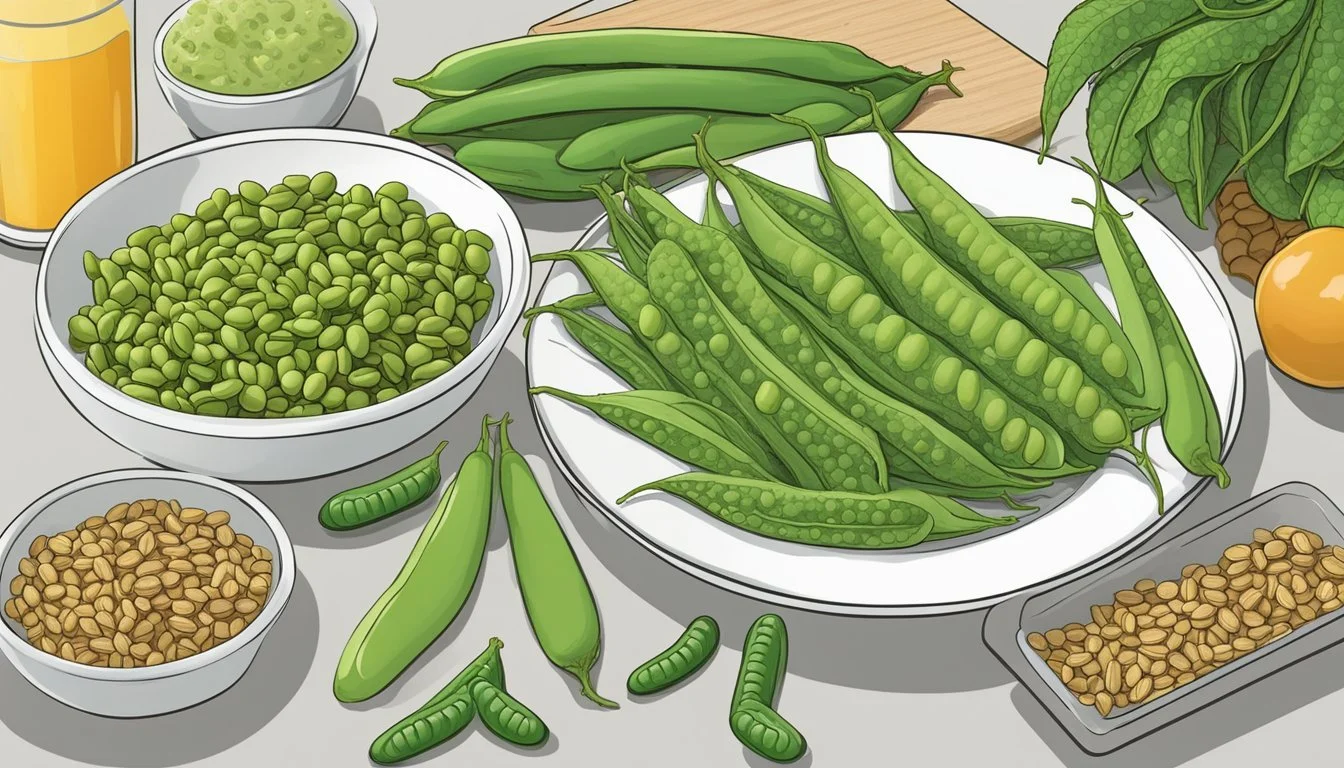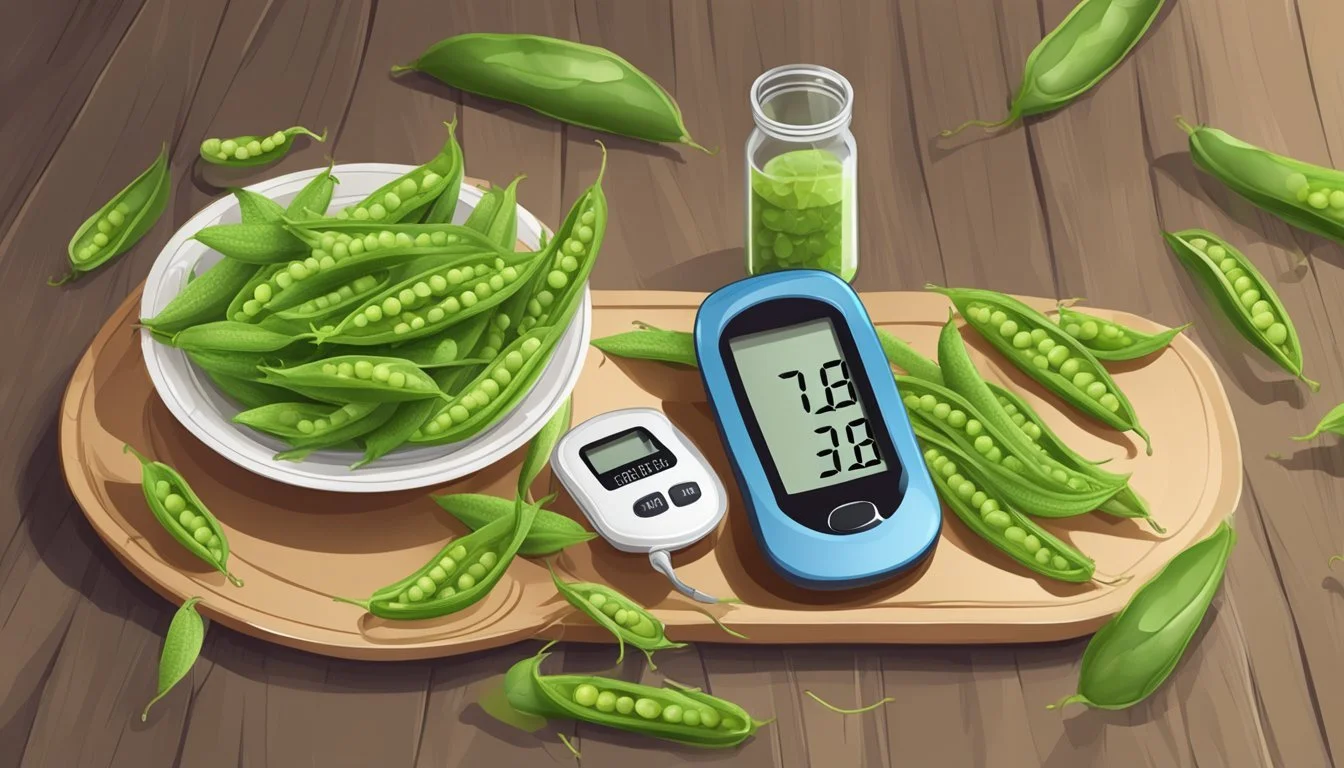Can Diabetics Eat Winged Beans?
Nutritional Benefits and Considerations
For individuals managing diabetes, dietary choices are crucial. One lesser-known option that may benefit people with diabetes is winged beans. These legumes are packed with nutrition and offer a range of health benefits.
Yes, diabetics can eat winged beans, and they can be a nutritious part of a meal plan. These beans are low in calories and rich in dietary fiber, which helps in managing blood sugar levels. The complex carbohydrates found in winged beans are digested slowly, preventing spikes in blood glucose.
Incorporating winged beans into various dishes, such as salads or stir-fries, can add nutritional value and unique flavor. Their low-calorie content makes them an ideal addition to a diabetic diet, helping to maintain balanced blood sugar levels efficiently.
Understanding Diabetes and Diet
Managing diabetes effectively involves paying close attention to diet choices. Specifically, understanding how different foods impact blood sugar levels is crucial.
Role of Diet in Diabetes Control
Diet plays a significant role in diabetes management. It's essential for balancing blood sugar levels, which directly impacts overall health.
Key dietary components include:
High-fiber foods: Such as beans, whole grains, and vegetables.
Lean proteins: Like fish, poultry, and legumes.
Healthy fats: Including nuts, seeds, and avocados.
These foods can help maintain stable blood sugar levels. Choosing the right foods can prevent spikes and dips in glucose, making diabetes easier to manage.
Impact of Carbohydrates on Blood Sugar Levels
Carbohydrates have a direct impact on blood sugar levels. They are broken down into glucose, which enters the bloodstream.
There are two main types of carbs:
Simple Carbs: Found in sugary foods and white bread. These can cause quick spikes in blood sugar.
Complex Carbs: Found in beans and whole grains. These break down more slowly, preventing rapid increases in blood sugar.
Understanding these differences helps in planning a diabetes-friendly diet. Complex carbs, in particular, are beneficial for stable blood sugar control.
Winged Beans Profile
Winged beans, also known as Psophocarpus tetragonolobus, offer a rich nutritional profile and can be highly beneficial for individuals managing diabetes due to their unique nutrient composition.
Nutritional Composition
Winged beans are packed with protein, which is essential for muscle maintenance and repair. A 100-gram serving typically provides around 10 grams of protein.
They are also rich in fiber, offering approximately 6 grams per 100 grams, which supports digestive health and aids in maintaining stable blood sugar levels.
Vitamins found in winged beans include significant amounts of Vitamin A, Vitamin C, and several B vitamins like B1 (thiamine), B2 (riboflavin), and B9 (folate).
For minerals, winged beans are notable for their high content of calcium, iron, potassium, and magnesium. These minerals play various roles in bodily functions, from bone health to electrolyte balance.
Additionally, these beans contain other beneficial nutrients such as antioxidants, which help in reducing oxidative stress.
Benefits of Winged Beans for Diabetics
Winged beans are particularly useful for diabetics due to their low glycemic index. This means they release glucose into the bloodstream slowly, preventing sudden spikes in blood sugar.
The high fiber content further aids in regulating blood sugar levels by slowing down carbohydrate digestion and absorption.
Protein in winged beans helps in keeping the body full and maintaining stable energy levels without causing significant increases in blood glucose.
The rich supply of vitamins and minerals supports various bodily functions. For instance, magnesium is known to enhance insulin sensitivity, crucial for diabetes management.
By incorporating winged beans into their diet, individuals with diabetes can enjoy a nutritious food option that contributes to overall health and blood sugar control.
Comparison with Other Beans
Winged beans differ from other legumes in several nutritional aspects including protein content, fiber levels, and their impact on blood sugar. These differences make them a unique choice for individuals monitoring their diabetes.
Winged Beans vs. Other Legumes
Winged beans stand out due to their high protein content, rivaling that of lentils and chickpeas. This makes them an excellent protein source for vegetarian and vegan diets.
Kidney beans, black beans, and pinto beans are also rich in protein but typically contain slightly more carbohydrates.
Navy beans and chickpeas offer a good balance of protein and fiber but have a higher overall carb content compared to winged beans. This makes winged beans a better option for minimizing blood sugar spikes.
Incorporating winged beans into meals can provide sustained energy without rapid glucose level increases, which is crucial for diabetes management.
Glycemic Index of Various Beans
The Glycemic Index (GI) measures the impact of carbohydrate-containing foods on blood sugar levels. Lower GI foods are beneficial for diabetics.
Winged beans have a low glycemic index, similar to many other legumes such as black beans and lentils. This helps prevent rapid spikes in blood sugar levels.
Kidney beans and pinto beans also feature low GI values, making them suitable for maintaining stable glucose levels.
Chickpeas and navy beans are slightly higher on the glycemic index but still offer a lower impact on blood sugar compared to simple carbohydrates.
A comparative table can help illustrate these values:
Bean Type Glycemic Index (GI) Winged Beans Low Kidney Beans Low Black Beans Low Lentils Low Chickpeas Medium Pinto Beans Low Navy Beans Medium
Opting for low-GI beans like winged beans can be a strategic component in managing diabetes effectively.
Incorporating Winged Beans into a Diabetes Diet
Winged beans offer numerous benefits for those managing diabetes due to their high fiber and protein content. Understanding the appropriate serving sizes, healthy preparation methods, and innovative recipes can enhance their dietary inclusion.
Recommended Serving Size
Diabetics need to monitor carbohydrate intake closely.
Serving Size:
Approximately 1/2 cup of cooked winged beans is recommended.
This portion size provides essential nutrients while keeping calorie and carbohydrate intake manageable.
Winged beans are low in the glycemic index, making them a suitable choice for stabilizing blood sugar levels.
Healthy Bean Preparation Methods
Preparation methods significantly impact the nutritional value of winged beans.
Cooking Tips:
Opt for boiling or steaming to retain most nutrients.
Avoid using excessive oil or frying.
Seasoning:
Use herbs and spices such as garlic, cumin, and paprika to add flavor without added sugars or fats.
Incorporate lemon juice or vinegar for a zesty kick.
Innovative Recipes for Diabetics
Winged beans can be creatively incorporated into various dishes.
Salads:
Winged Bean Salad: Combine boiled winged beans with mixed greens, cherry tomatoes, cucumber, and a light vinaigrette dressing.
Add lean protein, like grilled chicken or tofu, for a cohesive meal.
Soups:
Add winged beans to a vegetable soup base with carrots, celery, and onions.
Include low-sodium broth and simmer until all ingredients are tender.
Chili:
Create a diabetic-friendly chili by using boiled winged beans, lean ground turkey, and diced bell peppers.
Season with chili powder, cumin, and garlic, allowing the flavors to meld together.
Hummus:
Blend cooked winged beans with tahini, lemon juice, and garlic to create a unique twist on traditional hummus.
Serve with raw vegetable sticks like carrots, cucumber, and bell peppers for a nutritious snack option.
Incorporating these varied recipes can help individuals with diabetes enjoy a diverse and tasty diet while managing their condition effectively.
Managing Blood Sugar Levels
Winged beans can be a beneficial addition to the diet of someone with diabetes. Key aspects include their high fiber content and low glycemic index, which can help in regulating blood sugar levels and improving glycemic control.
Effects of Fiber on Glucose Absorption
High fiber content in winged beans plays a crucial role in glucose absorption.
Fiber slows the digestion and absorption of carbohydrates, which prevents rapid spikes in blood sugar levels. This is especially important for diabetics, as smooth and steady glucose levels are preferable.
By incorporating winged beans, which are rich in dietary fiber, people with diabetes can benefit from improved digestive health and consistent energy levels. The fiber not only aids in controlling blood sugar but also contributes to a feeling of fullness, which can help in managing weight.
Regulating Glycemic Control with Winged Beans
Winged beans are known for their low glycemic index (GI), making them particularly suitable for those managing diabetes. Foods with a low GI do not cause sudden spikes in blood sugar levels, providing better glycemic control over time.
The combination of protein, fiber, and essential nutrients in winged beans supports overall metabolic health. Regular consumption can lead to reduced insulin resistance and better long-term glycemic control.
By including winged beans in their diet, diabetics can take advantage of these properties to maintain stable blood sugar levels and improve their overall health management program.
Health Considerations Beyond Diabetes
Winged beans offer numerous benefits beyond diabetes management. Their impact on heart health and potential role in weight management are particularly noteworthy.
Heart Health and Winged Beans
Winged beans are high in nutrients that can support heart health. They are an excellent source of potassium, which helps control blood pressure. High blood pressure is a major risk factor for heart disease, making dietary potassium essential.
These beans are also rich in fiber.
Fiber can reduce cholesterol levels by binding to cholesterol in the digestive system and preventing its absorption. A diet high in fiber is shown to lower the risk of cardiovascular diseases.
In addition, winged beans contain antioxidants such as flavonoids, which can protect the heart by reducing inflammation and oxidative stress. This improves overall heart function and minimizes the risk of heart-related issues.
Winged Beans for Weight Management
Winged beans can be a valuable addition to weight management plans. They are low in calories and high in protein, which can help promote a feeling of fullness and reduce overall calorie intake.
Protein is crucial for muscle maintenance and growth. Having sufficient protein in the diet can prevent muscle loss during weight loss attempts, making it easier to maintain a healthy weight.
The high fiber content in winged beans also aids in weight management. Fiber expands in the stomach, creating a sensation of fullness that can help prevent overeating. This can be particularly beneficial for individuals managing obesity.
Moreover, the complex carbohydrates found in winged beans digest slowly, providing a steady release of energy and preventing sharp spikes in blood sugar that can lead to cravings.
Expert Guidance and Recommendations
Understanding the role of winged beans in a diabetic diet requires insights from health experts. Their opinions clarify how these beans can fit into daily meal plans, ensuring safe and beneficial consumption for people with diabetes.
Consulting with a Dietitian
Dietitians often tailor advice based on individual health needs. Winged beans are rich in protein, fiber, and essential vitamins. Dietitians emphasize their low glycemic index, which means they have less impact on blood sugar levels, making them a smart choice for diabetics.
When incorporating winged beans, Certified Diabetes Educators recommend balancing them with other food groups. For instance, combining winged beans with leafy greens and lean proteins can create a well-rounded meal. This approach ensures consistent energy levels and effective blood sugar management.
Regular consultation with a dietitian helps diabetics track progress and adjust their diet as needed. Personalized meal plans are crucial as they account for unique metabolic responses and dietary preferences.
American Diabetes Association's Perspective on Beans
The American Diabetes Association (ADA) identifies beans as beneficial for diabetics. Winged beans share similar properties with other recommended beans like kidney or black beans. They are high in fiber, which helps regulate blood sugar levels by slowing glucose absorption.
The ADA also highlights the importance of portion control. For winged beans, they recommend including them as part of the daily carbohydrate allowances. Their nutrient density supports overall health, offering vitamins and minerals essential for diabetic management.
Including winged beans in the diet can improve cholesterol levels and support digestive health. These benefits align with the ADA's broader guidelines for diabetes management.









